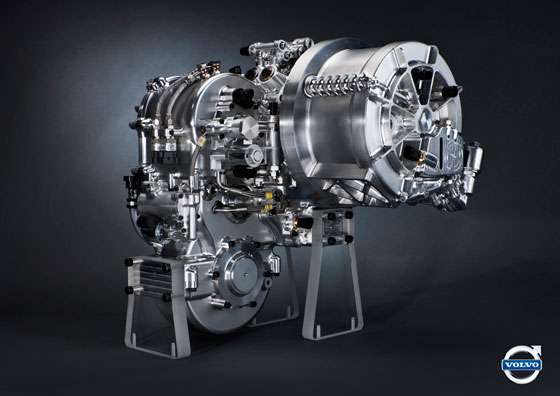
Antes do início dos trabalhos, a Volvo esperava que a economia de combusível chegasse aos 20%. Depois de um ano, as expectativas foram superadas, com o KERS diminuindo os índices de consumo em até 25%.
O veículo testado foi um S60 com motor ICE de quatro cilindros. As rodas motrizes eram as dianteiras, ao passo que as traseiras impulsionavam o KERS da Volvo. Quando o pedal do freio é pressionado, o motor é desligado e o KERS é acionado, com a roda livre ganhando velocidades de até 60.000 RPM. A potência gerada pelo KERS, de até 80 CV, é então usada para auxiliar na arrancada ou para manter a velocidade de cruzeiro.
O sistema da Volvo é o mesmo do KERS do Audi R18 etron quattro, com a exceção de que as rodas motrizes do competidor de Le Mans serem as traseiras e as dianteiras serem impulsionadas pelo KERS. Com o KERS da Volvo, o S60 com motor ICE de quatro cilindros e tração dianteira pode acelerar de zero a 100 km/h em 5,5 segundos, 1,1 a menos que o S60 com motor T6 3.0 e tração integral.
A economia máxima de combustível só pode ser obtida em circuito urbano com muitas frenagens. Nestas condições, a Volvo diz que o motor a combustão pode ficar desligado em até metade da distância percorrida.
Volvo Cars tests of flywheel technology confirm fuel savings of up to 25 per cent
Volvo Car Group has completed extensive testing of kinetic flywheel technology on public roads - and the results confirm that this is a light, cheap and very eco-efficient solution.
Apr 25, 2013 -- "The testing of this complete experimental system for kinetic energy recovery was carried out during 2012. The results show that this technology combined with a four-cylinder turbo engine has the potential to reduce fuel consumption by up to 25 percent compared with a six-cylinder turbo engine at a comparable performance level," says Derek Crabb, Vice President Powertrain Engineering at Volvo Car Group, "Giving the driver an extra 80 horsepower, it makes car with a four-cylinder engine accelerate like one with a six-cylinder unit."
The experimental system, known as Flywheel KERS (Kinetic Energy Recovery System), is fitted to the rear axle. During retardation, the braking energy causes the flywheel to spin at up to 60,000 revs per minute. When the car starts moving off again, the flywheel's rotation is transferred to the rear wheels via a specially designed transmission.
The combustion engine that drives the front wheels is switched off as soon as braking begins. The energy in the flywheel can then be used to accelerate the vehicle when it is time to move off again or to power the vehicle once it reaches cruising speed.
Most efficient in city traffic
"The flywheel's stored energy is sufficient to power the car for short periods. This has a major impact on fuel consumption. Our calculations indicate that it will be possible to turn off the combustion engine about half the time when driving according to the official New European Driving Cycle," explains Derek Crabb.
Since the flywheel is activated by braking, and the duration of the energy storage - that is to say the length of time the flywheel spins - is limited, the technology is at its most effective during driving featuring repeated stops and starts. In other words, the fuel savings will be greatest when driving in busy urban traffic and during active driving.
If the energy in the flywheel is combined with the combustion engine's full capacity, it will give the car an extra 80 horsepower and, thanks to the swift torque build-up, this translates into rapid acceleration, cutting 0 to 100 km/h figures by seconds. The experimental car, a Volvo S60, accelerates from 0 to 100 km/h in 5.5 seconds.
Carbon fibre for a lightweight and compact solution
Flywheel propulsion assistance was tested in a Volvo 260 back in the 1980s, and flywheels made of steel have been evaluated by various manufacturers in recent times. However, since a unit made of steel is large and heavy and has rather limited rotational capacity, this is not a viable option.
The flywheel that Volvo Cars used in the experimental system is made of carbon fibre. It weighs about six kilograms and has a diameter of 20 centimetres. The carbon fiber wheel spins in a vacuum to minimise frictional losses.
"We are the first manufacturer that has applied flywheel technology to the rear axle of a car fitted with a combustion engine driving the front wheels. The next step after completing these successful tests is to evaluate how the technology can be implemented in our upcoming car models," concludes Derek Crabb.

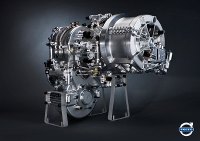
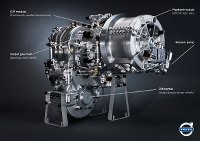
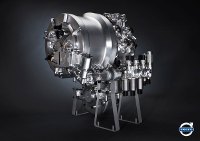
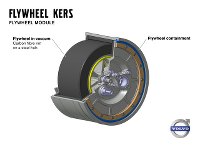
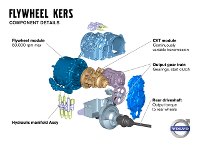
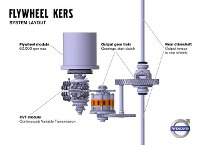
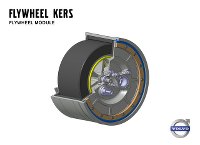
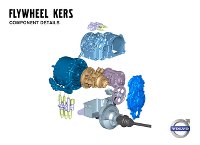
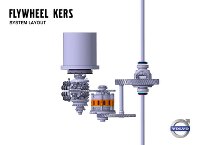
Postar um comentário